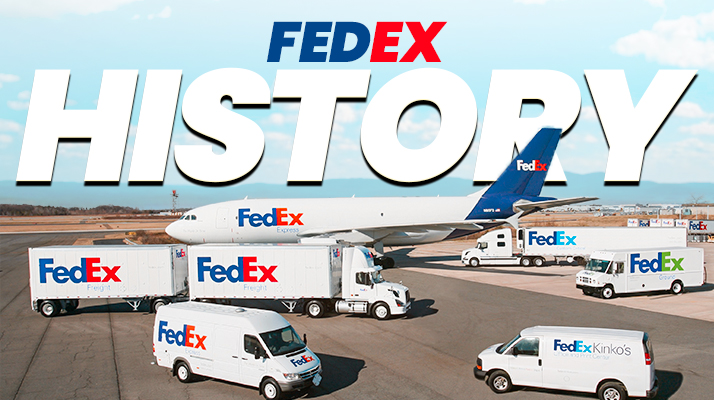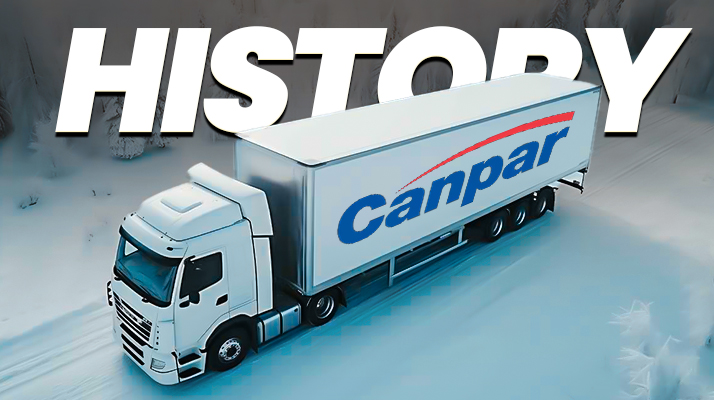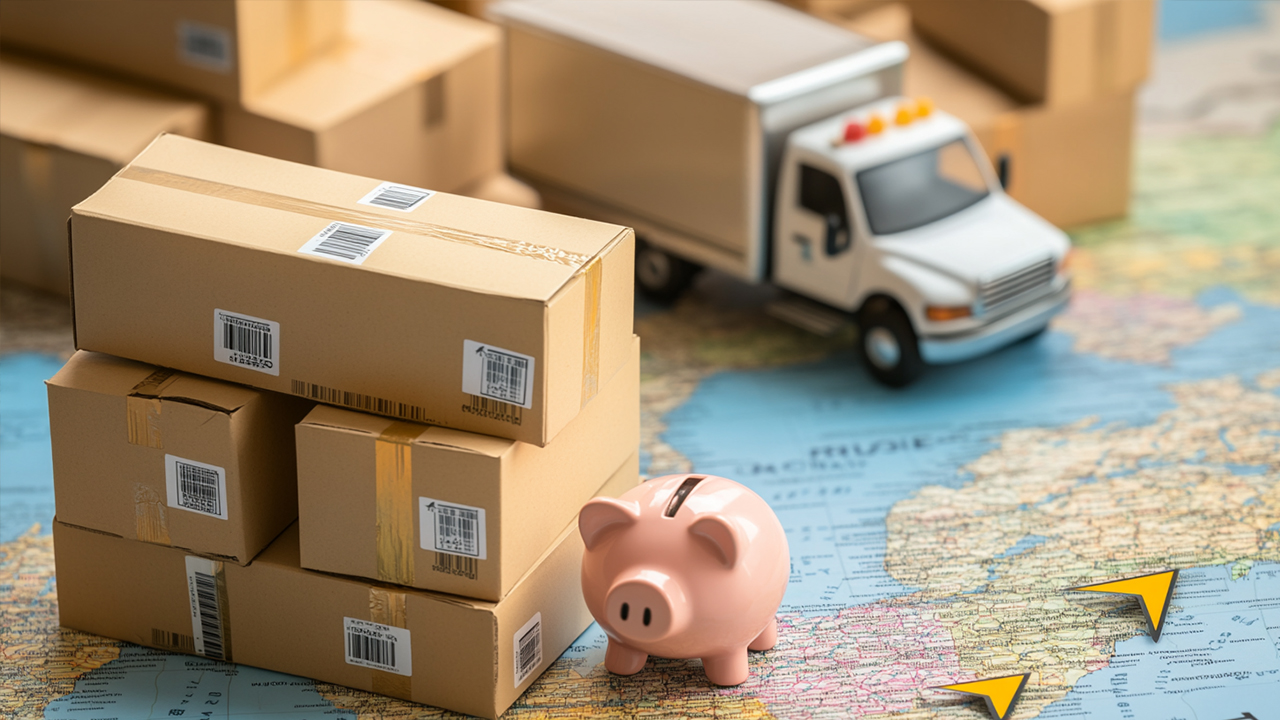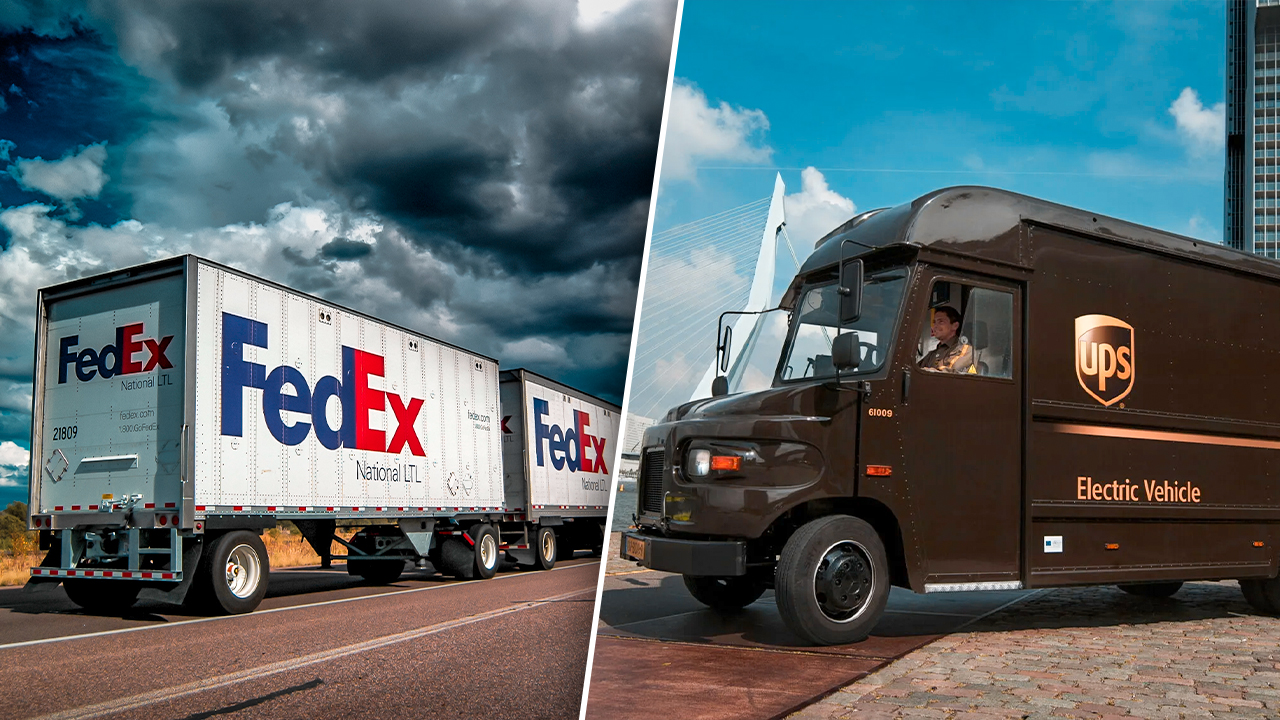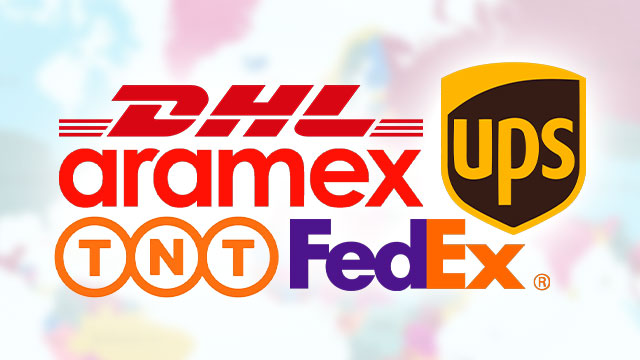From Barcode to Blockchain_The Evolution of Package Tracking Technology
Package tracking has come a long way since its inception, evolving from simple systems to advanced technologies that enhance delivery efficiency and transparency, including innovations like blockchain and QR codes.
This piece explores the journey of package tracking, starting with the introduction of barcodes, including UPC codes, and moving through the developments of RFID, GPS technologies, and the digital transformation of logistics operations.
It also examines the potential of blockchain technology, including smart contracts, how these innovations have reshaped logistics, and the challenges that lie ahead in ensuring data accuracy and transparency in supply chains.
Join us as we trace the historical milestones and future of package tracking technology, focusing on the importance of consumer trust and data storage.
1. The Evolution of Package Tracking Technology
The evolution of package tracking technology has significantly transformed supply chain dynamics, leading to enhanced operational efficiency, data accuracy, and consumer trust, especially in sectors like e-commerce, healthcare, and manufacturing. From the early days of simple barcode scanning to today's sophisticated blockchain technology and asset tracking systems, package tracking has evolved into a critical component of logistics operations across various industries, including e-commerce, healthcare, and manufacturing. Innovations like QR codes, such as those used in supermarket grocery checkouts, and digital identity solutions have streamlined inventory management and improved transparency, setting the stage for an exciting future in tracking systems and consumer insights.2. What is Package Tracking?
Package tracking is a technology that allows consumers and businesses to monitor the journey of products from the point of origin to their final destination, ensuring effective inventory tracking, including food traceability, and streamlined logistics operations.
This innovative system not only enhances transparency but also optimizes the supply chain by providing real-time updates about shipment status, which is essential in today's fast-paced market dynamics. By utilizing GPS technology, barcode scanning, including UPC codes, and RFID, businesses can efficiently manage their inventory and foresee potential delays, which ultimately improves customer satisfaction and reduces waste.
Various tracking methods such as web-based platforms, mobile applications, and automated systems allow stakeholders to access vital information anytime, anywhere. These systems primarily rely on innovative solutions:
- Data storage frameworks that retain historical tracking data, enabling auditing and traceability challenges.
- Cloud computing to provide seamless access and facilitate mobile payments.
- IoT devices for real-time monitoring and enhancing automation in logistics operations.
all of which serve to reinforce the importance of technology in modern logistics.
What Are the Different Types of Package Tracking?
There are several types of package tracking methods used in various industries, including barcode scanning, QR code tracking, asset tracking, RFID (Radio-Frequency Identification), and GPS tracking, each offering unique benefits and applications. Understanding these methods can significantly enhance efficiency, particularly in manufacturing and healthcare logistics, making it easier to monitor inventory levels, reduce delays, and improve customer satisfaction. in logistics and supply chain management, making it easier to monitor inventory levels, reduce delays, and improve customer satisfaction.The first method, barcode scanning, including UPC codes, is widely adopted due to its simplicity and cost-effectiveness. It allows companies to quickly scan packages at various points in the supply chain, enhancing data accuracy and providing real-time updates.
- QR code tracking is similar but enables more information storage, useful for product identification, and can be scanned with smartphones, making it convenient for both businesses and consumers.
- RFID technology provides an advanced solution by allowing remote tracking through radio waves, which can process multiple items simultaneously, greatly enhancing inventory management capabilities and reducing counterfeiting risks.
- GPS tracking offers real-time location data, which is invaluable for delivery services to monitor shipments' progress, fostering transparency and consumer trust.
Each of these methods contributes to a more streamlined operation, showcasing the importance of technology in modern logistics and its role in ensuring ethical sourcing practices.
3. The Early Days of Package Tracking
The early days of package tracking were marked by the introduction of the barcode, including UPC codes, in the 1970s, revolutionizing inventory management and supply chain logistics by enabling efficient product identification and tracking.How Did the Barcode Revolutionize Package Tracking?
The barcode revolutionized package tracking by introducing a simple and effective way to automate inventory management, significantly improving operational efficiency in logistics operations and contributing to waste reduction.Previously, inventory management involved tedious manual counting and paper records that were not only time-consuming but also prone to errors, leading to safety recalls in some industries. Now, the implementation of barcode technology has streamlined these processes across various sectors, including retail, healthcare, and manufacturing.
- Retail: In retail environments, barcodes allow for rapid scanning at the grocery checkout, reducing wait times and enhancing customer satisfaction.
- Healthcare: Hospitals utilize barcodes to track medications and ensure food safety, ensuring the right drugs are administered to the right patients, thus improving patient safety.
- Manufacturing: In factories, barcodes are employed to monitor progress on production lines, helping to maintain productivity levels and manage inventory more effectively.
This automation not only minimizes human error but also gives the power to businesses to gather accurate data, leading to better decision-making and ultimately, improved profitability through innovative solutions. As a result, the implementation of barcodes has reshaped the landscape of inventory tracking, giving organizations the ability to respond swiftly to market demands and improve consumer insights.
What Were the Limitations of Barcode Tracking?
Despite its transformative impact, barcode tracking has inherent limitations, including reliance on line-of-sight scanning, which can hinder data accuracy and operational efficiency in high-volume logistics operations.These restrictions can result in delays and errors during inventory checks, posing significant challenges for businesses that require rapid turnaround times in industries like e-commerce and manufacturing. Barcode systems demand manual scanning, which makes them vulnerable to human error and impacts safety recalls.
For instance, if a worker accidentally scans the wrong barcode, it can lead to incorrect inventory counts, mismanagement of stock levels, and issues with product authenticity. Environmental factors, such as poor lighting or damage to the barcode, can further complicate the scanning process and affect data accuracy. This dependence on manual intervention has prompted the logistics industry to explore more sophisticated tracking systems, including automated systems and blockchain technology.
- RFID technology enhances accuracy by automating data capture without needing a direct line of sight, proving essential for asset tracking and inventory management.
- GPS tracking provides real-time location updates for shipments, bolstering transparency in supply chain management and enhancing consumer trust.
Consequently, these advanced technologies are becoming increasingly integral in addressing the limitations of traditional barcode systems, paving the way for improved operational efficiency and the ethical sourcing of products.
4. The Rise of RFID Technology
The rise of RFID (Radio-Frequency Identification) technology has significantly enhanced package tracking capabilities, allowing for automatic tracking without the need for line-of-sight, which greatly improves operational efficiency in inventory management and supports food traceability.How Does RFID Tracking Work?
RFID tracking works by using electromagnetic fields to automatically identify and track tags attached to objects, resulting in efficient package tracking and streamlined inventory management processes.RFID technology operates through a sophisticated communication process, enabling seamless interactions between the reader and the tags, facilitating digital identity management. When a reader emits a signal, the tag receives the energy and responds by transmitting stored data back to the reader, improving data storage and accessibility.
- This data transfer occurs without direct line-of-sight, enhancing flexibility in tracking various items and improving operational efficiency.
- The range of communication can vary significantly based on tag type; passive tags, for instance, rely on the reader’s signal, while active tags contain their own power source, which impacts data accuracy.
The impact of RFID technology on logistics and inventory management is profound, fostering real-time visibility and accuracy in stock levels, thus minimizing the chances of errors and enhancing consumer trust. As a result, organizations can achieve better operational efficiency, leading to improved customer satisfaction, reduced operational costs, and waste reduction.
What Are the Advantages of RFID Tracking?
RFID tracking offers numerous advantages, including enhanced operational efficiency, improved data accuracy, and the ability to track multiple items simultaneously, making it a valuable tool in modern inventory management and asset tracking.By integrating RFID technology, organizations can streamline their logistics processes, reducing the time spent on manual tracking, enhancing automation, and minimizing human error. The system enables real-time visibility of goods throughout the supply chain, allowing businesses to efficiently manage their inventory levels and improve food traceability. This visibility not only improves the accuracy of data but also enhances decision-making capabilities and supports ethical sourcing.
- In logistics, RFID tracking facilitates quicker sorting and routing of shipments, thus enhancing efficiency in supply chain operations.
- For inventory management, it automates stock counts, leading to significant labor savings and boosting operational efficiency.
- Overall supply chain optimization results in reduced operational costs, improved customer satisfaction, and enhanced consumer insights.
The technology can be easily integrated with existing systems, including those used for asset tracking, providing a scalable solution for companies of all sizes seeking to enhance their efficiency and accuracy.
5. The Emergence of GPS Tracking
The emergence of GPS tracking technology has revolutionized package tracking by enabling real-time location monitoring, enhancing logistics operations, and fostering consumer trust through transparency benefits.What is GPS Tracking and How Does it Work?
GPS tracking is a technology that utilizes satellite signals to determine the precise location of objects, allowing for accurate package tracking and improved logistics operations.This system operates through a network of satellites orbiting the Earth, each continuously transmitting data about their position and time. When GPS receivers on the ground receive signals from multiple satellites, they can calculate their location based on the time it took for the signals to arrive. Additionally, QR codes are often utilized alongside GPS data to enhance tracking capabilities.
- By analyzing the signals from at least four satellites, a receiver can triangulate its position with remarkable precision, contributing to efficient operations in various industries.
- This technology is invaluable for logistics and supply chain management, streamlining the process of monitoring package movement and optimizing delivery routes, significantly impacting the food supply chain.
The real-time data provided by GPS tracking enhances decision-making, reduces operational costs, and ultimately improves customer satisfaction through timely deliveries, reflecting the technological advancements in the industry.
How Did GPS Tracking Improve Package Delivery?
GPS tracking has significantly improved package delivery by providing real-time navigation and tracking capabilities, enhancing logistical operations and ensuring timely deliveries, making the whole process fast and easy.
This technology not only streamlines routing but also updates customers regarding their package status, ultimately improving their overall experience, while companies like Amazon Managed Blockchain work to automate these processes. For instance, a major logistics company has implemented GPS systems that allow customers to track their shipments on a mobile app at any time. Plus this convenience, delivery personnel can optimize their routes dynamically, reducing fuel consumption and time on the road, reflecting the environmental impact of improved logistics.
Below are some specific advantages of GPS technology in package delivery:
- Increased transparency: Customers can receive up-to-the-minute updates, which fosters trust and satisfaction.
- Enhanced operational efficiency: Routes can be adjusted in real-time to avoid traffic congestion, leading to quicker deliveries.
- Cost Savings: Companies benefit from reduced operational costs due to optimized routes.
The integration of GPS technology is a game-changer in the logistics industry, redefining how package deliveries are managed and experienced, showcasing the role of industry pioneers in this evolution.
6. The Future of Package Tracking: Blockchain Technology
The future of package tracking is poised for transformation through blockchain technology, which offers unparalleled transparency, enhanced data accuracy, and the potential for smart contracts to streamline logistics operations.What is Blockchain Technology and How Does it Work?
Blockchain technology is a decentralized digital ledger system that records transactions across many computers, ensuring data accuracy and transparency in package tracking processes, which is critical in an age where consumers demand real-time updates and proof of delivery for their shipments.At its core, this innovative system is composed of three main components: the block, the chain, and the network. The block contains a collection of transactions and information, while the chain securely links these blocks in chronological order, forming a tamper-proof record. The network consists of all participants, known as nodes, that validate and agree on the transactions taking place.
In the realm of package tracking systems, blockchain proves particularly valuable. For example, the supply chain industry leverages this technology to monitor goods during shipping, thereby reducing losses and improving efficiency. Similarly, the pharmaceutical industry employs blockchain to trace drug shipments, ensuring authenticity and compliance with regulations, an advancement seen in companies like Nestlé.
Here are some notable applications, including those in the automotive and mining industries:
- Retail: Facilitates real-time inventory tracking and enhances customer experience.
- Aerospace: Improves aircraft parts tracking for safety and reliability.
- Food industry: Ensures transparency in sourcing, tracking produce from farm to table, while promoting Fair Trade practices.
How Will Blockchain Revolutionize Package Tracking?
Blockchain is set to revolutionize package tracking by enabling secure, immutable records of every transaction, thereby enhancing transparency and consumer trust in the supply chain.The adoption of this technology not only streamlines the logistics process but also provides a comprehensive audit trail for each item, facilitating process automation that benefits numerous sectors. As packages are scanned at various stages, the information is updated in real time, allowing both companies and consumers to monitor progress effortlessly.
This level of transparency reduces the likelihood of fraud and errors, which are common in traditional systems.
- Enhanced Information Sharing: Different participants in the supply chain can access the same reliable data.
- Consumer Empowerment: Shippers can now offer more accurate delivery estimates.
- Increased Accountability: Every party involved in the shipment process can be traced.
Ultimately, this fosters a greater sense of trust between consumers and businesses, paving the way for a more reliable logistics ecosystem, driven by the benefits of artificial intelligence (AI).
7. What Are the Challenges and Concerns with Blockchain Package Tracking?
While blockchain technology holds great promise for package tracking, there are several challenges and concerns that need to be addressed, including scalability, security, and regulatory compliance.8. Frequently Asked Questions
What is the significance of "From Barcode to Blockchain: The Evolution of Package Tracking Technology"? This highlights the journey of package tracking technology from its inception with the use of barcodes, like those on Wrigleys chewing gum, to its current state with the integration of blockchain.
This topic highlights the journey of package tracking technology from its inception with the use of barcodes to its current state with the integration of blockchain, showcasing its evolution and potential for the future.
How did package tracking technology start?
Package tracking technology started with the use of barcodes, which were first introduced in the 1950s. These simple black and white lines revolutionized package tracking by providing a unique identifier for each package.
What are the limitations of using barcodes for package tracking?
Barcodes have limitations such as being prone to human error and not being easily accessible for customers to track their packages. Additionally, they can only store a limited amount of information, making it difficult to track packages in real-time, unlike the advancements offered by RFID technology.
What role does RFID play in package tracking?
RFID (Radio Frequency Identification) technology is used to track packages by attaching small tags to each package. These tags contain a microchip and antenna, allowing for the automatic collection of data and real-time tracking without the need for human intervention.
How does blockchain technology improve package tracking? It provides a more secure and transparent way of tracking packages, integrating with systems that utilize QR codes for easy access.
Blockchain technology provides a more secure and transparent way of tracking packages. It allows for the creation of a decentralized and tamper-proof ledger, providing real-time updates on the location and status of packages.
What does the future hold for package tracking technology?
The future of package tracking technology is expected to be highly advanced, with the integration of technologies such as artificial intelligence and Internet of Things (IoT), promising a landscape defined by seamless coordination and efficiency. This will further improve the accuracy and efficiency of package tracking, providing a seamless experience for both businesses and customers.

